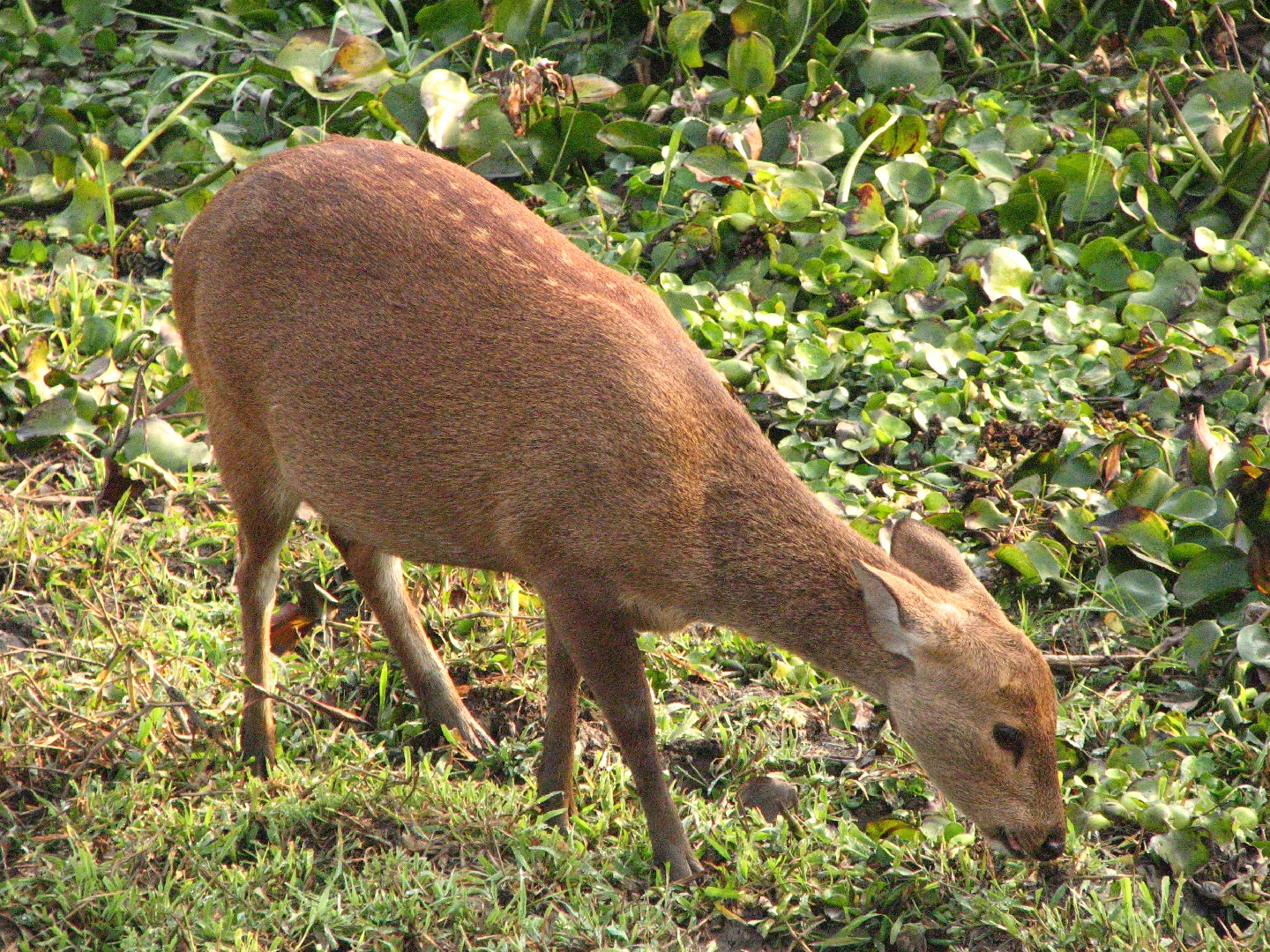Indian hog deer
A species of Chital and hog deer, Also known as Thai hog deer, Ganges hog deer Scientific name : Axis porcinus Genus : Chital and hog deer
Indian hog deer, A species of Chital and hog deer
Also known as:
Thai hog deer, Ganges hog deer
Scientific name: Axis porcinus
Genus: Chital and hog deer
Content
Description General Info
 Photo By Rohit Naniwadekar , used under CC-BY-SA-4.0 /Cropped and compressed from original
Photo By Rohit Naniwadekar , used under CC-BY-SA-4.0 /Cropped and compressed from original Description
A mature hog deer stag stands about 70 cm at the shoulder and weighs approximately 50 kg while hinds are much smaller, standing about 61 cm and weighing in the vicinity of 30 kg. They are very solidly built with a long body and relatively short legs and the line of the back slopes upward from the shoulders to a high rump. The ears are rounded; older animals tend to become light coloured in the face and neck. The Indian Hog Deer's coat is quite thick and generally a uniform dark-brown in winter except for the underparts of the body and legs which are lighter in colour. During late spring, the change to a summer coat of rich reddish brown commences although this may vary between individuals. Many hog deer show a dark dorsal stripe extending from the head down the back of the neck and along the spine. In summer, there is usually a uniform row of light-coloured spots along either side of the dorsal stripe from the shoulders to the rump. The tail is fairly short and brown but tipped with white. The underside of the tail is white and the deer can fan the white hairs out in a distinctive alarm display. Indian hog deer have preorbital glands on the face just below the eyes and metatarsal glands located high on the side of the rear legs. Pedal glands are located between the cleaves or toes of the hind hooves. The antler of a mature hog deer stag is typically three tined-brow tine with solid main beam terminating in inner and outer top tines. However, antlers with more points are not uncommon. The distinctive features of typical hog deer antlers are the acute angle between the brow tine and main beam and the fact that the inner tops tend to be short and angle back from the main beam and across towards the opposite antler. 
General Info
Lifespan
8-12 years
Diet
Indian hog deer primarily subsists on a variety of flora. These animals exhibit a preference for leaves, fruits, and tender shoots from a host of vegetation types. This diet is occasionally complemented by bark and twigs.
Appearance
Indian hog deer is a medium-sized deer with a slender build and soft, short fur. The fur color ranges from reddish-brown to dark brown, with white spots along the body. Males are characterized by elongated antlers, while females lack them. Both sexes have a prominent white patch on the throat and underparts. No significant variations occur among subspecies or age groups.
Behavior
Indian hog deer are primarily nocturnal and display crepuscular tendencies, active during dusk and dawn. They are social creatures, forming small herds. These herbivores exhibit a mixed feeding pattern, browsing and grazing depending on the season. They exhibit distinct territory marking by rubbing their preorbital glands on trees, fallen trunks, and branches.
Population
Decreasing